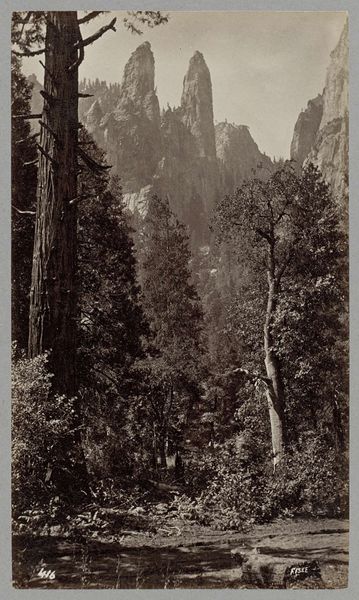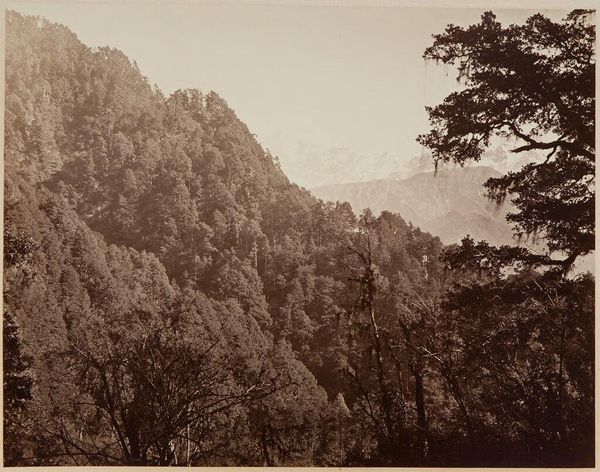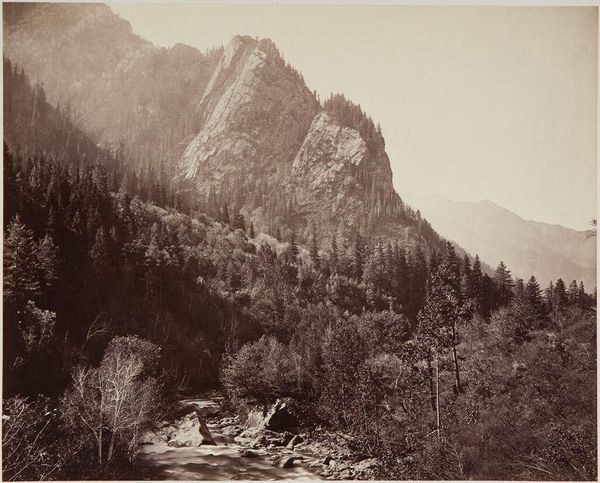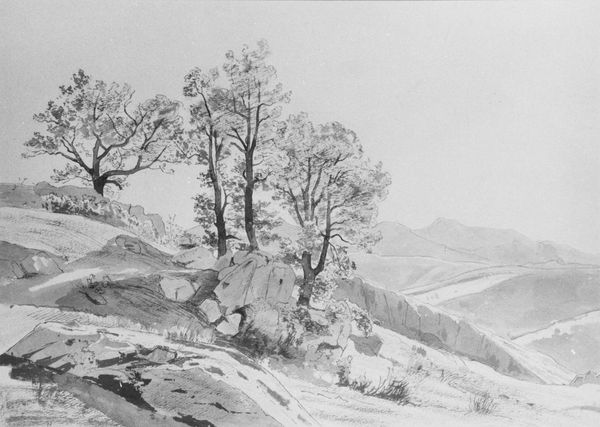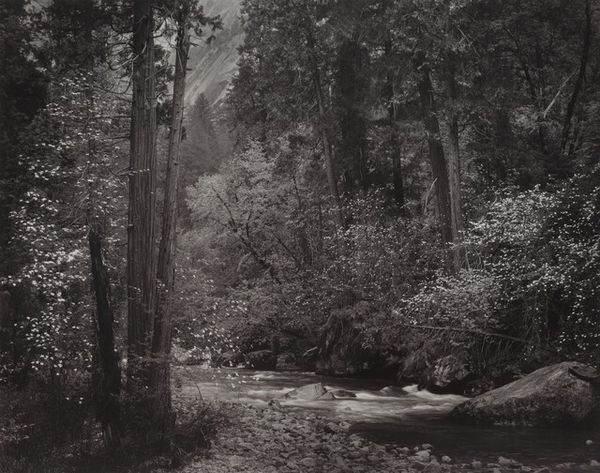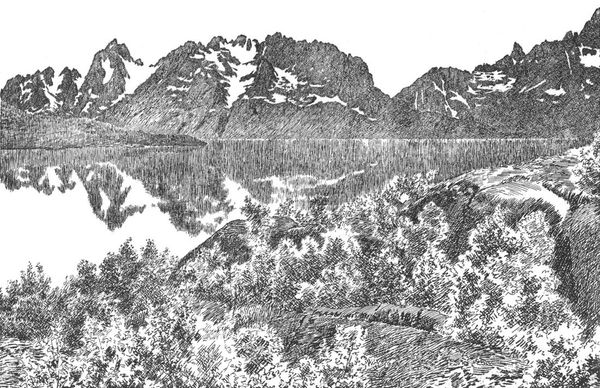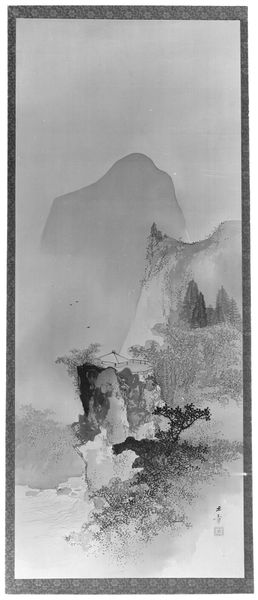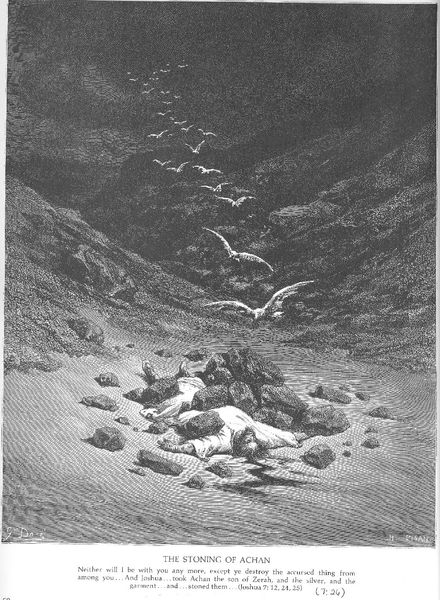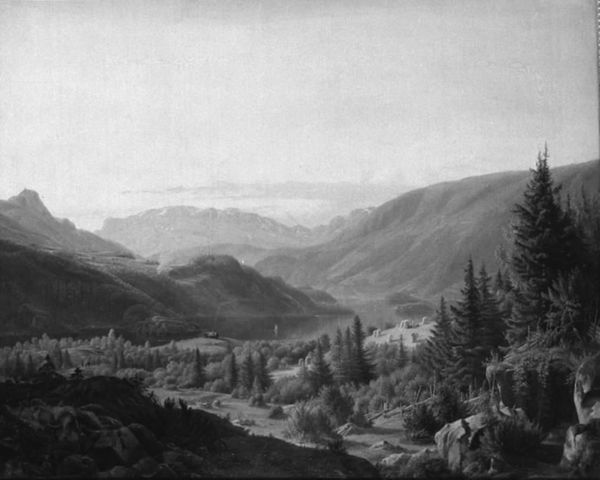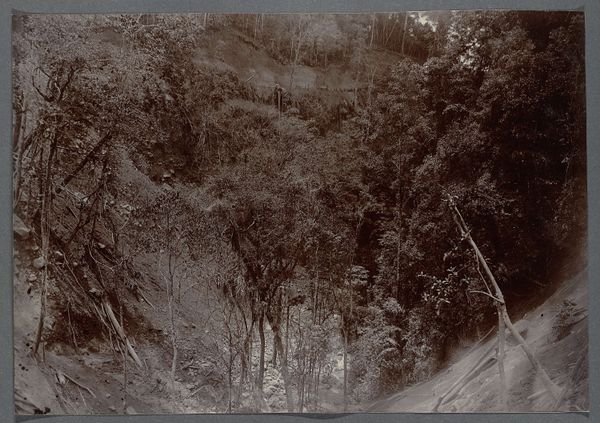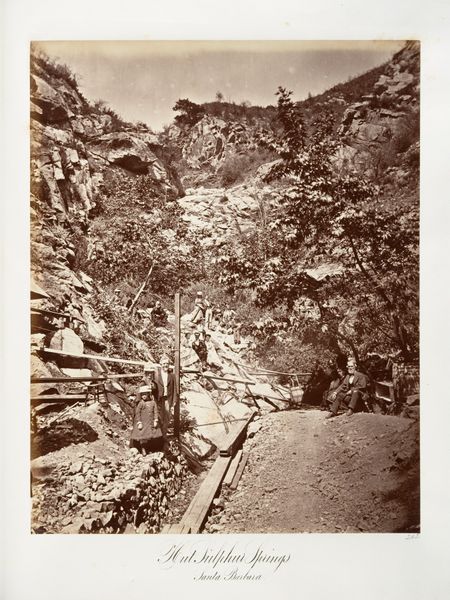
Dimensions: 12 7/8 x 9 7/16 in. (32.7 x 24 cm)
Copyright: Public Domain
Editor: This is William Trost Richards' "Eagle's Nest, Franconia Notch," created in 1873. It’s a graphite drawing. The misty atmosphere gives it an almost ethereal feel. What do you make of this piece, especially considering the Hudson River School context? Curator: It’s a compelling work. Looking at it from a historical perspective, this drawing embodies the Romantic ideals prevalent in the Hudson River School, yet also subtly hints at the changing relationship between humans and nature during that period. It emerged at a time of increasing industrialization and westward expansion in America. The "sublime" qualities are evident in the majestic mountain, but there’s a certain taming – the well-defined path suggests accessibility and control. How do you interpret the presence of that path? Editor: I hadn’t really thought of it as "taming" the wilderness. I guess I saw it as inviting, a way for people to connect with nature, almost reverentially. Curator: And that's precisely the tension that makes it so interesting! On the one hand, it's inviting; on the other, it underscores human agency. These artists were actively shaping perceptions of the American landscape. Their works played a role in promoting tourism, national identity, and even shaping conservation efforts, however, the question remains, were these views widely available or were they exclusively accessed? Editor: So, this drawing wasn’t just a neutral depiction of nature? Curator: Rarely is art ever ‘just’ a neutral depiction, and that includes works depicting landscapes. "Eagle's Nest" both reflects and reinforces the cultural values of the time. Even the choice of Franconia Notch, a popular tourist destination, speaks to a desire to make nature palatable for public consumption, doesn’t it? It subtly encourages people to visit, but maybe also change, this ‘wild’ location. Editor: That’s a completely different way of seeing it than I had before. It’s less about the beauty of the landscape, and more about its social and political function. Curator: Exactly. Analyzing art through a historical lens allows us to unpack these complex layers and understand the power dynamics at play in its creation and reception. The museum has transformed this artwork as well from simply a "work of art", into a culturally significant historical artifact. Editor: I learned a lot about seeing the artwork with greater societal insight, and it gives me new appreciation for the layers of historical impact that an artwork can yield.
Comments
No comments
Be the first to comment and join the conversation on the ultimate creative platform.
